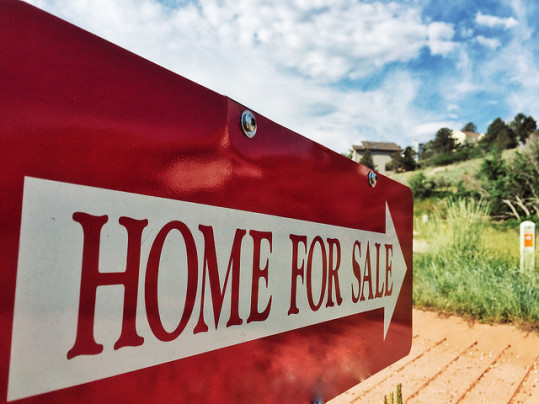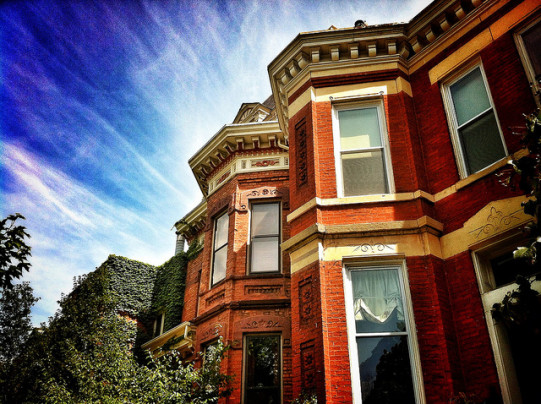According to the Mortgage Bankers Association’s Weekly Applications Survey, average mortgage rates increased last week from the previous week. Rates were up on 30-year fixed-rate loans with conforming balances, loans backed by the Federal Housing Administration, and 15-year fixed-rate mortgages. Jumbo loans, on the other hand, saw a slight decrease. The change in rates was enough to send mortgage application demand downward, however. In fact, the total number of requested applications for mortgage loans fell 6.2 percent, mainly due to a drop in refinance activity. Michael Fratantoni, MBA’s chief economist, told CNBC borrowers with larger loans are more sensitive to mortgage rate changes. “The decline in the average loan size for both purchase and refinance applications last week showed again that borrowers with larger loans are much more sensitive to a given change in rates,” Fratantoni said. “The slight uptick led to a fairly sharp weekly drop in refinance volume, and purchase volume slipped as well.” The MBA’s weekly survey has been conducted since 1990 and covers 75 percent of all retail residential mortgage applications. More here.
Archive for September 2015
Housing Sentiment Cools Slightly After Hot Summer
Fannie Mae’s newly announced Home Purchase Sentiment Index takes the results of their monthly National Housing Survey – which polls Americans about their attitudes toward the housing market and their personal finances – and distills them into a single number that can be used to track consumer attitudes toward buying and selling a home. According to the results, the index fell 0.5 points in August to 80.8. That’s down slightly from the all-time high reached in June but still up 5.3 points from one year earlier. Doug Duncan, Fannie Mae’s senior vice president and chief economist, said attitudes toward the current home selling climate have slid back a bit. “Expectations of rising mortgage rates and increasing concerns in the last six months about the direction of the economy seem to be weighing on consumers’ assessment of the housing market,” Duncan said. “Those who think it’s a good time to buy or sell a home have consistently pointed to favorable mortgage rates as the primary reason for their optimism. Those who think it’s a bad time to buy or sell a home have consistently pointed to unfavorable economic conditions as the primary reason for their pessimism.” Still, this month’s survey found the number of people who think it’s a good time to sell and those who think it’s a good time to buy both rose 2 percent from the month before. More here.
Does Today’s Market Favor Buyers Or Sellers?
If you want to know if today’s housing market favors buyers or sellers, just take a look at how long homes hang around before they’re sold. In areas where there’s a lack of inventory and a large number of buyers, homes will sell faster and at a higher price. That’s a seller’s market. If there are more homes for sale than there are interested buyers, that’s a buyer’s market. Buyers, in these areas, can shop a little longer and may even be able to negotiate more favorable terms or a lower price once they find a house to buy. In other words, paying attention to how long homes stay up for sale will give you a better idea of whether you need to move fast or you have time to deliberate. To that end, a recent analysis from Trulia measured how many homes listed for sale on June 17 were still on the market on August 17. Nationally, 63 percent of the homes for sale in June hadn’t sold by August. That’s up from 61 percent last year and indicates conditions, overall, are headed in a direction that favors buyers. But despite the slight slowdown nationally, a closer look reveals big differences from one market to the next. For example, in some Californian markets, less than 40 percent of the homes for sale hadn’t sold after two months, while close to 60 percent of the homes for sale in Detroit and Kansas City were still available after the same amount of time. More here.
Natural Disaster Report Ranks Housing Risk
RealtyTrac’s recently released 2015 U.S. Natural Disaster Housing Risk Report ranked 2,318 counties across the country based on their overall risk of suffering a natural disaster. The results found that – within the counties included in the analysis – 43 percent of the single-family homes and condos were at high or very high natural hazard risk. That’s 35.8 million homes with a combined estimated market value of $6.6 trillion. Daren Blomquist, RealtyTrac’s vice president, said prospective buyers should be aware of any natural disaster risk impacting a potential home purchase. “In most cases, learning about natural disaster risk will not stop a home sale, but it will help buyers make a better-informed decision about where to buy and also be prepared in terms of appropriate insurance coverage and family contingency plans depending on the type of natural disaster risks most affecting the home they end up purchasing,” Blomquist added. Not surprisingly, homes on the coasts received the highest risk rating, with California, New York, North Carolina, Florida, and New Jersey ranking in the top five. More here.
Rate Drop Causes Spike In Mortgage Demand
According to the Mortgage Bankers Association’s Weekly Applications Survey, turmoil in the stock market caused interest rates to fall briefly last week, which led to a spike in demand for mortgage applications. In fact, refinance activity – which is more sensitive to mortgage rate fluctuations – was up 17 percent from the week before. Demand for loans to buy homes also saw an increase, rising 4 percent. Purchase application demand is now 25 percent higher than it was during the same week one year ago. Mortgage rates didn’t stay down for long, however. And, by the end of the week, they had returned to where they were the week before. “Although mortgage rates were unchanged for the week, Treasury rates were down sharply early in the week due to the global stock market rout and this led to a significant increase in application volume,” Mike Fratantoni, MBA’s chief economist, said. The MBA’s weekly survey has been conducted since 1990 and covers 75 percent of all retail residential mortgage applications. More here.
Do Home Buyers Prefer Cities Over Suburbs?
There is an ongoing debate over whether or not demographic trends reveal a preference for city living or suburban neighborhoods among Americans on the move. For many years, the suburbs were the most popular spot among buyers but recent evidence may indicate that Americans are beginning to move back to the city. According to Fitch Ratings’ RMBS Sustainable Home Price Report, the proof is in the prices. In short, home prices have been rising faster in cities than the surrounding area and that’s because more Americans are looking to buy a home in the city. In other words, stronger price growth in urban centers is a reflection of a broader shift in population growth trends. “This demand shift implies that city centers will continue to see growth even where regional prices have been stagnant, such as Atlanta or Chicago,” Fitch director, Stefan Hilts, said. In fact, over the past 15 years, home prices have grown 50 percent faster in city centers. Hilts added that one of the byproducts of an increased preference for cities over suburbs is that homeownership rates may remain low, as more potential home buyers opt to live in areas where rentals dominate. More here.
Majority Of Americans Say They’ll Buy Soon
A majority of Americans say they’re likely to buy a house in the next five years, according to a recent survey. The survey, conducted by Pollara, found 52 percent of respondents thinking about buying a house in the near future. It also found that Americans say they are willing to spend $296,000 on their dream house and the vast majority plan to get pre-approved for a loan before starting their home search. Mirroring a number of recent polls and industry forecasts showing growing confidence in the housing market among consumers, the survey is yet another indication that interest among potential home buyers continues to climb. Americans have a renewed interest in homeownership and are being spurred to action by still-favorable affordability conditions. Also in the report, the vast majority of current homeowners spent under six months searching for a new home and 75 percent said they set a budget before they began looking at houses. Among those, 16 percent went over budget and 13 percent came in under budget. More here.







